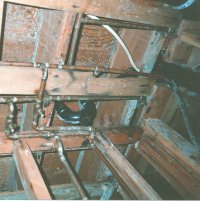Air quality testing should be conducted by a qualified professional. However, there are basic tests that a homeowner or a property manager can perform by themselves and save money. Air quality testing for mold does not require any special training. Mold & Bacteria Consulting Laboratories has been renting air quality testing equipment to homeowners, property managers or professionals who are just starting their businesses.
To perform your own air quality testing for mold it’s important to plan ahead. For example you need to decide how many rooms you want to test as this will determine the number of air samples you will collect. ideally, one should test all the rooms but if the budget cannot allow you can test areas of concern. In addition to the samples you collect from indoors, an outdoor sample is also required. The outdoor air sample helps to determine which of the mold spores detected indoors had likely originated from outdoors.
Interpreting air sample results can be difficult. However, after comparing indoor samples with outdoor sample, if the types of spores detected from the indoor sample are the same as those detected from outdoors and the indoor counts are significantly lower than those of the outdoors, then we can conclude that the tested areas had no mold problem at the time of testing. This conclusion is only valid if we cannot visually see mold growth and the building is not damp. It’s important to note that while the spore counts could be low, presence of certain types of molds could be an indication of major moisture damage and possibly hidden mold growth.
How to perform air quality testing
As indicated previously you’ll require to rent an air sampling pump. You’ll also need to purchase air sampling cassettes. Mold & Bacteria Consulting Laboratories provides instructions on how to operate the pump. After sampling the samples are sent to the laboratory for identification and counting of spores. The results are reported as the number of spores per cubic meter of air. Click air sampling instructions to watch a video on how to perform air quality test for mold.


